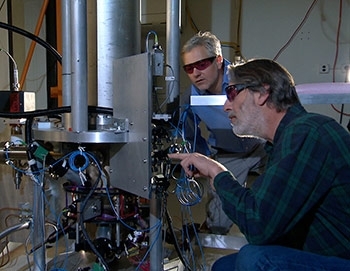Apr042014
Posted at 10:30 AM
The U.S. Department of Commerce's National Institute of Standards and Technology (NIST) has officially launched a new atomic clock, called NIST-F2, to serve as a new U.S. civilian time and frequency standard, along with the current NIST-F1 standard.
NIST-F2 would neither gain nor lose one second in about 300 million years, making it about three times as accurate as NIST-F1, which has served as the standard since 1999. Both clocks use a "fountain" of cesium atoms to determine the exact length of a second.
NIST scientists recently reported the first official performance data for NIST-F2, which has been under development for a decade, to the International Bureau of Weights and Measures (BIPM), located near Paris, France. That agency collates data from atomic clocks around the world to produce Coordinated Universal Time (UTC), the international standard of time. According to BIPM data, NIST-F2 is now the world's most accurate time standard.
For now, NIST plans to simultaneously operate both NIST-F1 and NIST-F2. Long-term comparisons of the two clocks will help NIST scientists continue to improve both clocks as they serve as U.S. standards for civilian time. The U.S. Naval Observatory maintains military time standards.
Both NIST-F1 and NIST-F2 measure the frequency of a particular transition in the cesium atom—which is 9,192,631,770 vibrations per second, and is used to define the second, the international (SI) unit of time. The key operational difference is that F1 operates near room temperature (about 27 ºC or 80 ºF) whereas the atoms in F2 are shielded within a much colder environment (at minus 193 ºC, or minus 316 ºF). This cooling dramatically lowers the background radiation and thus reduces some of the very small measurement errors that must be corrected in NIST-F1.
Watch Steve Jefferts, NIST physicist, explain how the NIST-F2 atomic clock works.


